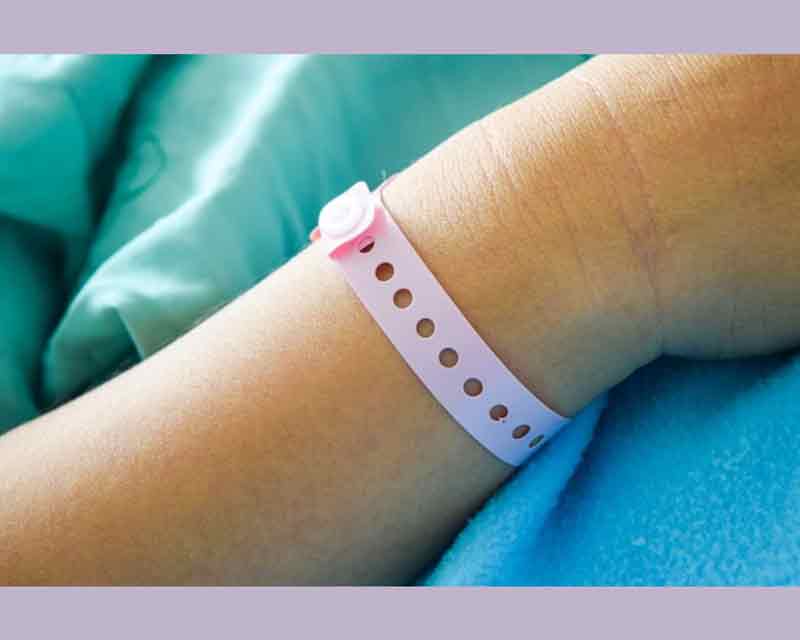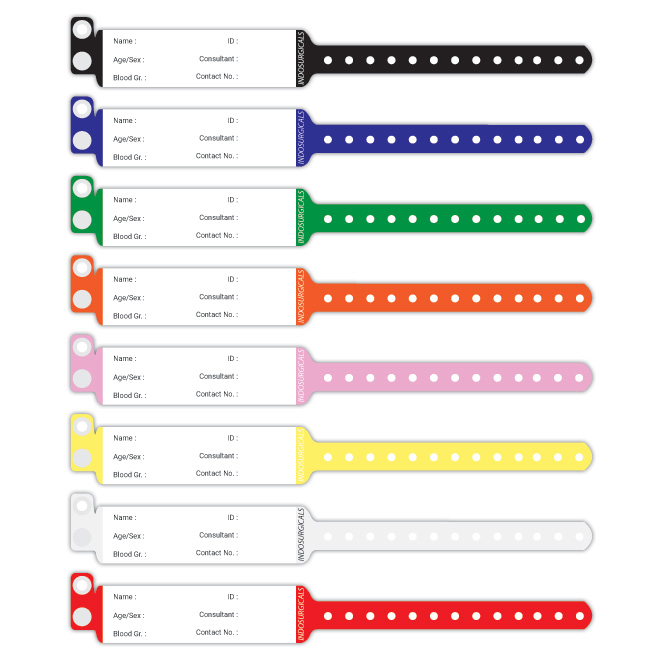Discovering the Various Kinds Of Patient Identification Band Used in Clinical Facilities
In the intricate world of health care, the essential duty of Patient Identification bands often goes unnoticed. These bands, varying from straightforward paper wristbands to advanced RFID bands, develop the foundation of Patient security procedures, making sure precision in Patient Identification. Yet, the huge diversity of these bands, each with its one-of-a-kind advantages and limitations, is often overlooked. As we browse with this topic, one might get understanding right into the refined intricacies and vital importance of such bands in medical centers.
Comprehending the Importance of Patient Identification Bands
While they may seem like mere devices, Patient Identification bands play an important duty in clinical centers. These bands offer as an important tool for validating Patient identification, stopping medical errors connected to misidentification. Patient Identification bands additionally help in simplifying administrative tasks, making sure exact record-keeping and payment.
Traditional Paper Wristbands: Their Use and Limitations
Conventional paper wristbands have been a staple in Patient Identification across different clinical centers. While their use is extensive, they nurture particular restrictions that might influence their efficiency in Patient monitoring. This area will concentrate on the range of their application and the fundamental disadvantages connected with their use.
Paper Wristbands: Use Range
In the world of Patient Identification, paper wristbands have long held a vital function. These bands are typically made use of in outpatient setups, where the Patient's keep is temporary. Regardless of developments in technology, the simple paper wristband continues to be a reputable and cost-efficient solution for Patient Identification in numerous healthcare scenarios.
Limitations of Paper Wristbands
Regardless of their widespread usage, paper wristbands are not without their disadvantages. In enhancement, paper wristbands typically do not have the technical abilities of more modern-day options, such as barcoding or RFID chips, restricting their capability to just displaying written info. Paper wristbands can trigger discomfort or skin inflammation to some clients, particularly when worn for prolonged periods.
Barcoded Wristbands: Advancements in Patient Identification
While Patient Identification has long been a critical aspect of healthcare, the development of barcoded wristbands represents a significant jump ahead. These bands leverage the simpleness of barcoding modern technology, enabling for Patient info to be swiftly scanned and accessed. They enhance the rate and accuracy of Patient Identification, reducing the threat of clinical errors associated with misidentification. Barcoded wristbands are economical, easy to create, and remove handwriting errors typical with hands-on systems. They are not without restrictions. While they use renovations over traditional bands, the barcode can end up being worn or smudged, rendering it unreadable. Regardless of this, barcoded wristbands remain a vital tool in contemporary healthcare settings, representing the junction of modern technology and Patient care.
Radio Frequency Identification (RFID) Bands: an Action In The Direction Of Futuristic Healthcare
The development of Patient Identification bands has produced the introduction of Radio Frequency Identification (RFID) Bands (patient identification band). These innovative tools existing crucial advantages for medical care centers, providing a more reliable and highly progressed methods of Patient Identification. The execution of RFID in healthcare is a significant action in the direction of an extra advanced approach to Patient monitoring and safety and security
Understanding RFID Bands

RFID Bands: Key Advantages
Primarily, these bands boost Patient safety by supplying precise, instantaneous Identification, consequently minimizing clinical mistakes. RFID bands can store a vast quantity of Patient information, consisting of clinical background and allergies, enabling individualized treatment. Generally, RFID bands stand for a considerable advancement in Patient Identification innovation, profiting both people and medical care suppliers.
Implementing RFID in Healthcare
As we step right into a technologically innovative period, the execution of RFID bands in health care ends up being significantly essential. These bands supply a seamless way to track and identify patients, ensuring their safety and security and improving performance in therapy procedures. RFID bands use various benefits over typical Identification techniques. They can keep a substantial amount of information, consisting of the Patient's case history and therapy plans, which can be easily accessed by doctor. This information helps medical professionals make educated choices pertaining to the Patient's therapy plan. RFID bands minimize clinical errors by offering precise Patient Identification, which is important in stopping misdiagnosis or incorrect medication administration. Hence, the application of RFID bands is a considerable step towards improving Patient security and health care shipment.

Color-Coded Wristbands: Helping in Quick and Accurate Medical Diagnosis
In the dynamic environment of a clinical facility, color-coded wristbands have actually become important devices for swift and exact Identification of a client's medical problem. These wristbands, worn by clients, lug certain colors that represent different clinical view publisher site problems or statuses. For example, red could suggest allergic reaction risks, while yellow may signify a fall danger. This system is developed to provide prompt aesthetic hints to healthcare service providers, improving Patient safety and security and care high quality. In emergency situations, making use of these wristbands enables for quick decision-making. The efficiency of color-coded wristbands depends on the uniformity of shade interpretation across healthcare establishments, calling for common criteria for constant application.
Approaches for Efficient Execution and Management of Patient ID Bands
Accomplishing optimal use of Patient Identification bands requires a well-structured approach for their application and management. The initial step involves training all health personnel on the significance of correctly applying and reading these bands. Secondly, healthcare facilities should standardize using ID bands across all departments, ensuring uniformity and minimizing discrepancies. Routine audits must be conducted to verify adherence to plans and to rectify any type of disparities. Patient education is likewise crucial; individuals should comprehend the purpose of the bands and the demand for their constant wear. patient identification band. It's essential to have a backup strategy in place, such as barcode scanning or biometrics, to make certain that Patient Identification is never compromised.
Verdict
Patient Identification bands are critical in clinical facilities to guarantee safety and security and precision. Effective execution and management of these bands can considerably click this lower medical errors, increase effectiveness, and boost general Patient care.
These bands, varying from easy paper wristbands to sophisticated RFID bands, create the foundation of Patient helpful hints safety procedures, ensuring precision in Patient Identification.The development of Patient Identification bands has brought regarding the emergence of Radio Regularity Identification (RFID) Bands. In general, RFID bands stand for a significant advancement in Patient Identification technology, profiting both patients and healthcare carriers.
RFID bands reduce clinical errors by offering precise Patient Identification, which is critical in avoiding misdiagnosis or wrong medicine management. Patient education and learning is additionally essential; people must comprehend the objective of the bands and the requirement for their continuous wear.